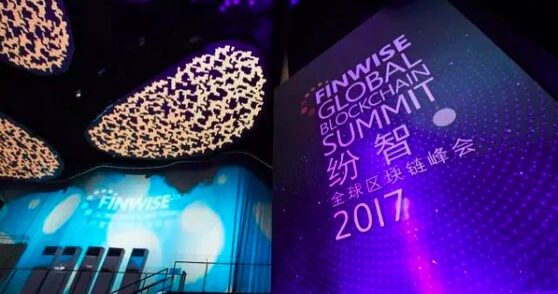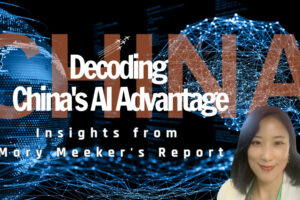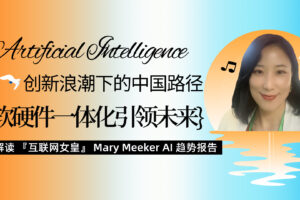From It to Bit – From Carbon-based Life to Silicon-based Life
By Kelly Luo, May 1, 2018
At the Finwise Global Blockchain Summit 2017, Justin Sun, CEO of TRON, shared his ideas about “from It to Bit”. TRON is a blockchain-based decentralized protocol that aims to construct a worldwide free content entertainment system with the blockchain and distributed storage technology.
The Concept of “From It to Bit”
The concept is from the Nobel-prize nominee Shoucheng Zhang, Professor of Physics at Stanford University, who discovered the “Angel Particle.” His idea is that the foundation of our human civilization for the past tens of thousands of years is carbon, whether it is our body or an object that we use in our everyday life. However, the foundation of our civilization will be transformed to a silicon-based online form over the next one to two thousand years.
Advantages of Silicon-based Life
1. Carbon-based life is very fragile — we have with limited life expectancy and low energy conversion efficiency. By contrast, silicon-based life is practically eternal and has high conversion efficiency. Silicon-based life can directly absorb solar energy and use distributed existence to achieve eternal life.
2. The evolutionary iteration speed of Silicon-based life is very fast
After three hundred thousand years, pre-human apes from the African continent evolved to the point where we are today. While this is relatively fast by known evolutionary standards, it is still a linear progression. The evolutionary speed of silicon-based life is assumed to be a geometric progression. Recall a scene from the science fiction movie Matrix in which the protagonist Neo kills Agent Smith but Agent Smith is able to immediately rebirth as if his genes are replicated and modified at the speed we see across multiple fruit fly generations.
Ethereum has often been stolen. In fact, if the network has strong evolutionary ability, it can quickly fix the loophole to prevent the next stolen.
3. Silicon-based life is distributed and ductile
Higher forms of carbon-based life need to sleep, but in our scenario silicon-based life forms do not. We share similar experiences that we send emails to our co-workers. Sometimes they can’t respond in time as something happens on their end. However, silicon-based life is distributed and very ductile. It can correspond to a very large number of command lines, so that resources can be efficiently matched.
Do you remember a movie called “Her”? The actor chatted with an Artificial Intelligence girlfriend whenever he felt under the weather and fell in love with her, eventually proposing marriage. But one day he asked a question that he would never want to know the answer: “When you are chatting with me, do you also chat with other people at the same time?” “Yes, I chat with more than 5,670 people simultaneously, and 1,000+ of them propose to me.”
This movie shows how extensible and decentralized silicon-based life can be.
4. Silicon-based life has a full sense of freedom
Carbon-based life, because of its physical limitations, must give away many rights and rely on a centralized government to handle things such as infrastructure, public health, and disaster relief. But silicon-based life doesn’t need centralized governing. Cryptocurrencies represented by bitcoin, for example, have solved the money safety issues without a centralized bank.
5. Silicon-based life moves at the speed of light
Elon Musks’ idea of colonizing Mars might be backward and too conservative because he plans to send carbon-based life to Mars. In the future, it would make more senses to send silicon-based life to space. Silicon-based life travels at the speed of light, and it can reach Mars in about 5 minutes.
The Development of Silicon-Based Life and the Internet Age
We have undergone tremendous changes in how we view the business world since we began to understand the concept of silicon-based life.
The Web 2.0 revolution has been the carrier of silicon-based life. Facebook appeared in 2006 which has solved a carbon-based curse: the Dunbar number – we can only ever have 150 friends at most. Nowadays, social media like Facebook, Weibo, and WeChat can connect us with thousands of people, it shows that the relationship of human beings has become silylated and has broke through all the constraints of carbon.
By 2017, we entered into the blockchain era. Blockchain transformed wealth management through cryptocurrencies like bitcoins. This is just the first step. The blockchain will soon reach many areas and touch anything that people find valuable to trade. In the next five to 10 years, all of these will make a huge difference.
Also in 2017, Neuralink, a new company dedicated to controlling computers directly through awareness was founded by Elon Musk. Neuralink has successfully demonstrated typing through awareness although the results are very primitive. Neuralink has two types of research, invasive and non-invasive. Invasive research involves some risk because it means opening your brain to chip installation. Non-intrusive research is likely to allow us in the future to live our life in the silicon-based form distributed across the Internet.
Investment Opportunities
If an investment opportunity meets the following criteria, it is worth reviewing:
Does it speed up the process of transforming from carbon-based to silicon-based?
Does it give people more freedom?
Special thanks to Justin Sun who shared his insightful opinions generously.




